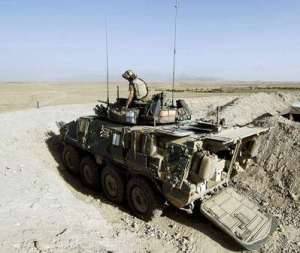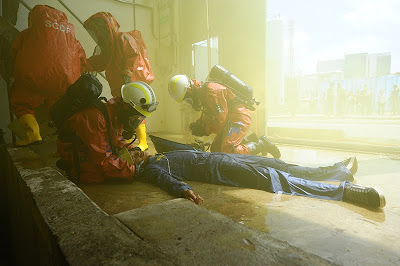
EDMONTON, Alberta and LONDON, Ontario – The Honourable Rona Ambrose, Minister of Public Works and Government Services and Minister for Status of Women, and the Honourable Julian Fantino, Associate Minister of National Defence, announced today that the Government of Canada has awarded a contract valued at C$1.064 billion (US$1.052 billion) to General Dynamics Land Systems-Canada to incorporate a comprehensive upgrade package into the Canadian Army's fleet of LAV III combat vehicles.
The LAV III Upgrade Project will modernize 550 vehicles, significantly enhancing their survivability, mobility and firepower and extending the fleet's lifecycle to 2035.
Survivability upgrades will include the introduction of double-V-hull technology, an innovative enhancement developed by General Dynamics Land Systems-Canada engineers, as well as add-on armour protection and energy-attenuating seats. Together, these improvements will provide crew members greater protection against mine blasts, IEDs and other threats.
The upgrades represent the latest armoured-vehicle technologies developed by General Dynamics Land Systems-Canada's engineers and its Canada-wide supplier base. Significant work will be performed at General Dynamics' facilities in London, Ontario, and Edmonton, Alberta, as well as the company's nationwide network of over 400 Canadian suppliers. All regions of Canada will benefit from this work, which is expected to be completed in 2017.
"Canadian soldiers need the best tools for the job and deserve the best protection we can give them," said Danny Deep, vice president of General Dynamics Land Systems-Canada. "This contract will enhance the LAV III fleet's survivability, operational capability and long-term performance through the addition of cutting-edge technologies. It will also provide much-needed job stability throughout Canada's high-value defence sector."
The LAV III's automotive performance, handling characteristics and payload capacity will be optimized by the addition of mobility system upgrades such as a more powerful engine, more robust driveline and suspension, and a height management system (HMS). The 25mm turret's crew ergonomics will be improved by incorporating larger hatches, and its capabilities will be enhanced by the addition of the latest technologies, including improved fire control, thermal, day and low-light sights, and data displays.

















